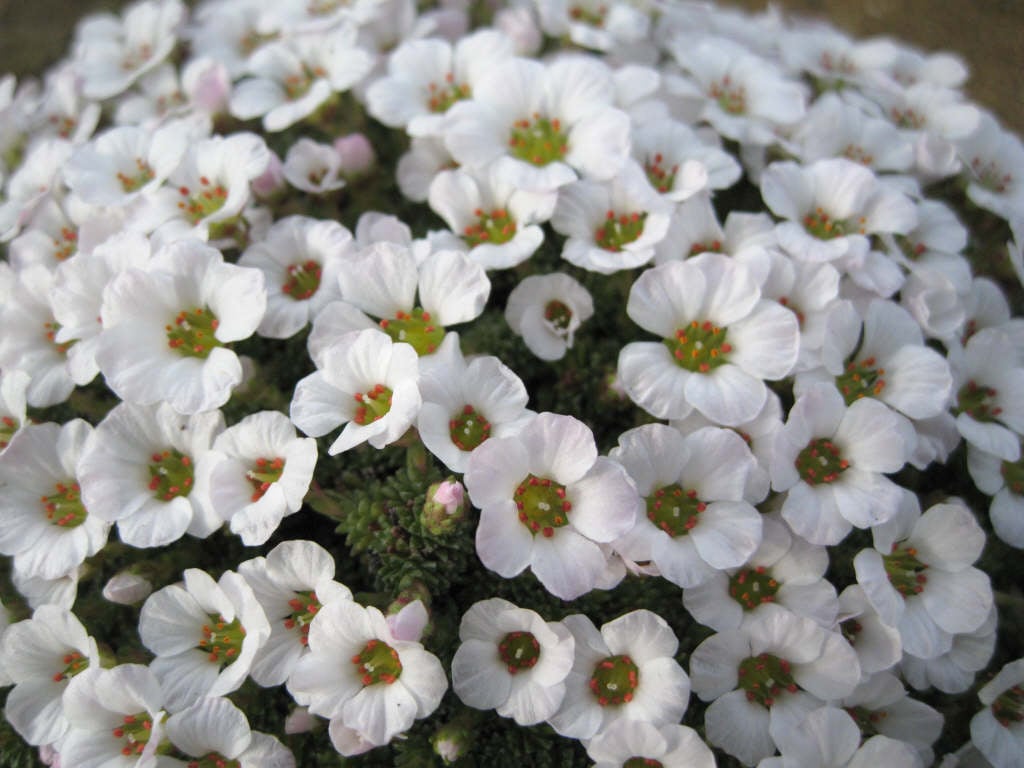Size
Ultimate height
Up to 10cmTime to ultimate height
2–5 yearsUltimate spread
0–0.1 metreGrowing conditions
Moisture
Well–drainedpH
Alkaline, NeutralColour & scent
| Stem | Flower | Foliage | Fruit | |
| Spring | White | Green | ||
|---|---|---|---|---|
| Summer | Green | |||
| Autumn | Green | |||
| Winter | Green |
Position
- Full sun
- Partial shade
Aspect
West–facing or South–facing or East–facing
Exposure
Exposed or Sheltered Hardiness
H5Botanical details
- Family
- Saxifragaceae
- Native to GB / Ireland
- No
- Foliage
- Evergreen
- Habit
- Matforming
- Genus
Saxifraga can be annuals, biennials, evergreen or herbaceous perennials, mostly mat-forming in habit, with simple or palmately lobed leaves and starry or rounded flowers which may be solitary of in panicles or cymes
- Name status
Accepted
- Horticultural Group
- Porphyrion section saxifrages are compact, cushion or mat-forming evergreen perennials with small, usually lime-encrusted leaves, and 5-petalled white, yellow or pink flowers in early summer
How to grow
Cultivation
Grow in a moderately fertile, very well-drained, neutral to alkaline soil in light shade. A rock garden or crevice garden is ideal so as to keep the roots cool. Troughs, sinks or an alpine house are also ideal places in which to grow 'Cumulus'. Use shallow pans of two parts peat-free John Innes No 1 compost and one part limestone chippings
Propagation
Propagate by seed in autumn in containers in an open frame (don't expect cultivars to come true from seed). Individual rosettes can be detached in spring as root cuttings in late spring or early summer
Suggested planting locations and garden types
- Gravel garden
- Rock garden
- Patio and container plants
Pruning
No pruning required. Deadhead where required
Pests
Aphids, glasshouse red spider mite and vine weevil may be problematic
Diseases
Generally disease-free
Get involved
The Royal Horticultural Society is the UK’s leading gardening charity. We aim to enrich everyone’s life through plants, and make the UK a greener and more beautiful place.
